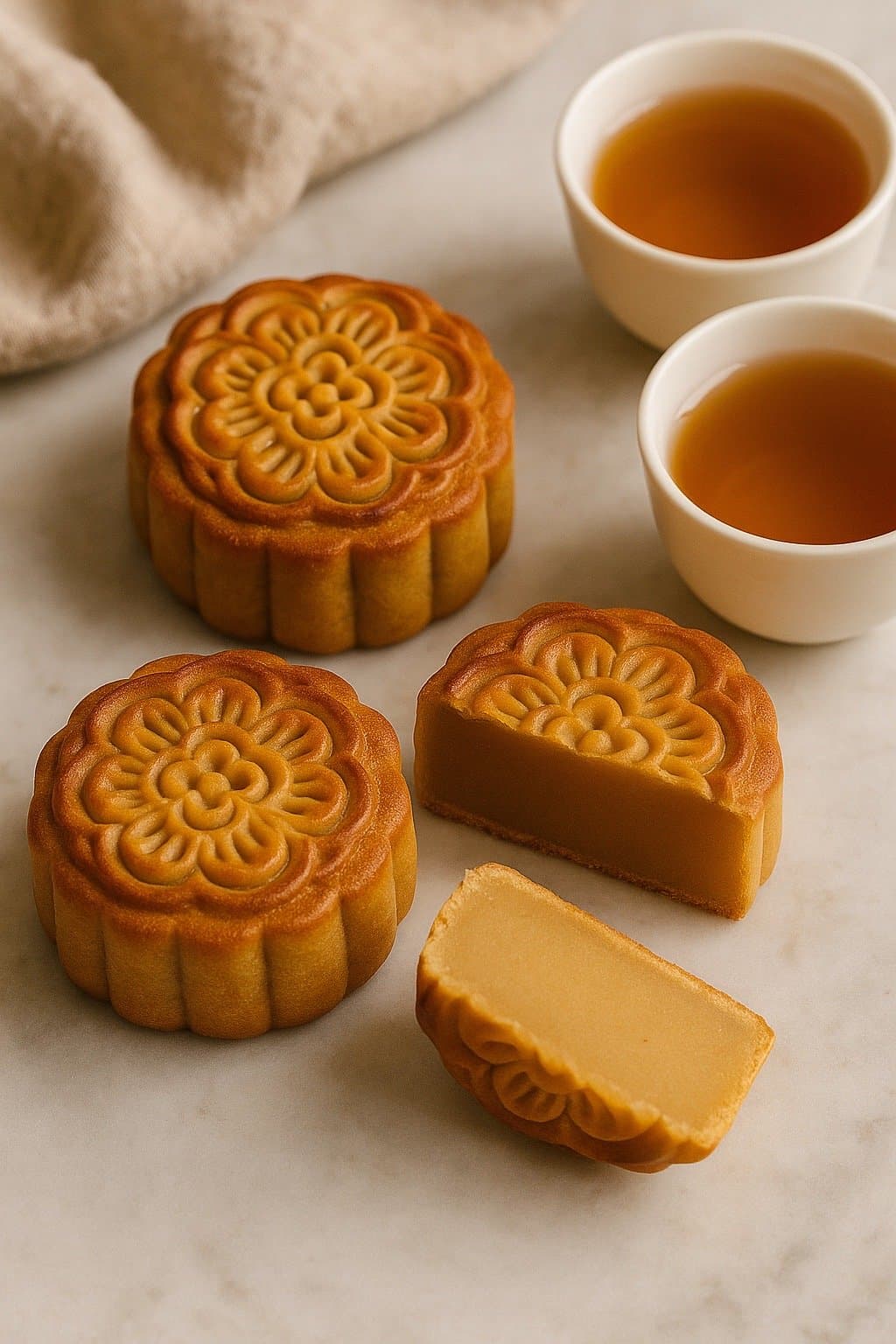The History and Origins of Mooncakes and the Mooncake Festival

The History and Origins of Mooncakes and the Mooncake Festival
The Mooncake Festival, also known as the Mid-Autumn Festival (中秋节 Zhōngqiū Jié), is one of the most important and widely celebrated traditional festivals in Chinese culture. This year in 2025, it falls on Monday, 6 October.
The Festival centers around the moon, family reunions, and—of course—mooncakes. These dense, round pastries aren’t just snacks—they’re symbols loaded with history, mythology, and meaning.
Origins of the Mid-Autumn Festival
The Mid-Autumn Festival dates back over 3,000 years, to China’s early Zhou Dynasty (1046–256 BCE), when people worshipped the moon as part of harvest rituals. It was believed that the full moon was at its brightest and roundest on the 15th day of the 8th lunar month, marking the perfect time to give thanks for the harvest and pray for prosperity.
By the Tang Dynasty (618–907 CE), moon worship evolved into a more celebratory occasion. The aristocracy began hosting moon-viewing parties, complete with music, poetry, and wine. The festival gained traction across all social classes during the Song Dynasty (960–1279 CE), becoming a public celebration tied to family gatherings and seasonal changes.
The Myth of Chang’e – The Moon Goddess
At the heart of the festival is the legend of Chang’e, the Moon Goddess. The most popular version of the myth tells of Hou Yi, a heroic archer who shot down nine of ten suns scorching the Earth. As a reward, he received an elixir of immortality. But instead of drinking it himself, he gave it to his wife, Chang’e, for safekeeping.
One day, a greedy apprentice tried to steal the elixir. To protect it, Chang’e drank it and floated to the moon, where she’s said to reside to this day. On the night of the Mid-Autumn Festival, people look up at the moon in remembrance of her sacrifice and longing.
The Rise of the Mooncake
Mooncakes first appeared as early as the Yuan Dynasty (1271–1368 CE) and were initially tied to a rebellion. According to legend, Han Chinese revolutionaries used mooncakes to secretly communicate plans to overthrow Mongol rulers. Hidden inside the pastries were messages like “Kill the Mongols on the 15th day of the 8th month.” The rebellion succeeded, and the Ming Dynasty was born. Mooncakes became a symbol of resistance—and later, reunion and unity.
What’s in a Mooncake?
Traditional mooncakes are dense, rich pastries filled with sweet or savory ingredients. The classic version has a lotus seed paste center with a salted duck egg yolk representing the full moon. Other popular fillings include red bean paste, jujube, mixed nuts, or ham. The outer crust is golden and often embossed with intricate patterns or Chinese characters symbolizing longevity and harmony.
Today, mooncakes come in countless varieties—ice cream mooncakes, snow skin mooncakes, even ones filled with chocolate or truffle. But no matter how inventive they get, the symbolic value remains: completeness, reunion, and sharing.
Modern-Day Celebrations
Across China and many parts of Asia—including Vietnam (where it’s called Tết Trung Thu), Malaysia, and Singapore—the Mooncake Festival is marked by moon-gazing, lantern parades, and family feasts. Kids carry glowing lanterns shaped like animals or mythical creatures, while adults exchange beautifully boxed mooncakes as gifts.
Though rooted in mythology and agrarian tradition, the festival thrives in modern cities, connecting people to their heritage and each other through the timeless rituals of food, storytelling, and gathering under the moon.
The Mooncake Festival is more than a cultural event—it’s a living link between past and present. From ancient moon worship to family reunions and intricate pastries with centuries-old stories baked inside, it reflects values that transcend generations: love, remembrance, resilience, and the simple joy of being together under the same sky.
So next time you bite into a mooncake, know that you’re tasting history.
Want to bake your own mooncakes at home? Try our classic lotus seed paste mooncake recipe — completely yolk-free and egg-free. Be sure to prepare them 1–2 days in advance to let the crust soften and develop shine before gifting or serving.
Share your thoughts
Did you find this history article interesting? Rate it below and let others know!